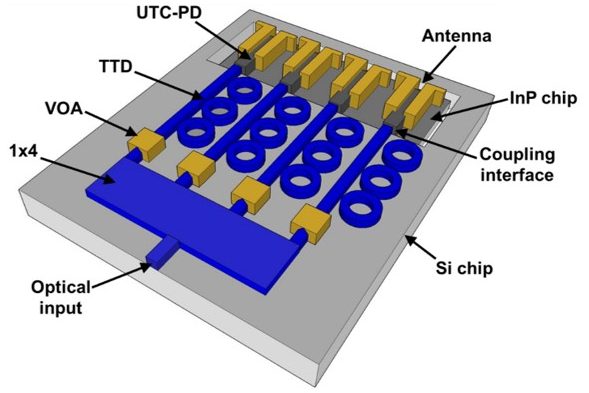3D Hybrid Integrated Silicon Photonics
We have developed a novel integration platform that conveniently merges InP and GaAs devices with SiPh in a backend processing step. Light is coupled between layers using grating couplers and total internal reflection (TIR) turning mirrors. This integration platform enables laser integration for silicon photonics and multi-chip photonic interposers. An important feature is superior heat…









